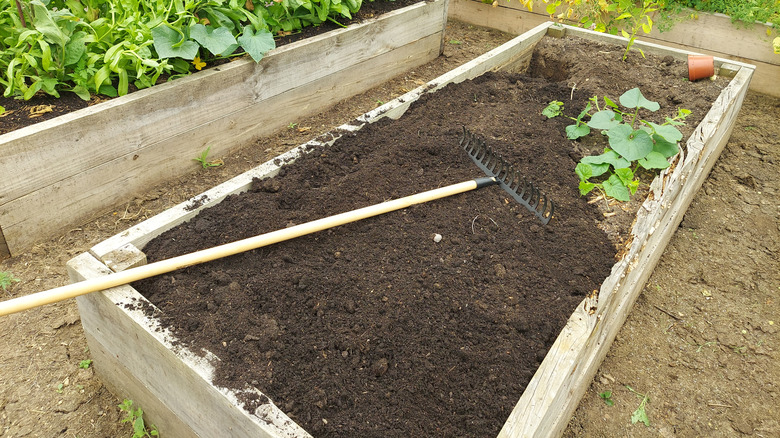What To Do With Soil From Raised Garden Beds In Winter (Toss Or Keep)
Once you've done all the work of constructing raised garden beds, filling them with all that soil, and growing beautiful crops all season, it can be heartbreaking to think about winter coming along and ruining everything. You might also be wondering if the investment you made in all that soil is lost now that the growing season is coming to an end. But while your spring flowers might be a loss, the soil doesn't have to be. There are a few easy ways to prep your raised garden beds for winter so they're ready next spring.
In fact, once the garden beds have been established, you'll be able to garden almost all year, and there will only be minor work needed at the start of the following season. To make sure the soil is staying healthy and to get a pulse on what you might do to keep it that way, you can test the soil every few years, or more often if it's a newer bed. It's important to maintain the soil to avoid having to dump it every year. Over time, the soil tends to lose nutrients and can lead to disease. If it is not tended to, it can become too problematic to fix and, in that case, it is better to remove all the old soil and start again with a healthier mix.
Salvaging soil from raised garden beds
If you want a healthy harvest, you shouldn't skimp on the soil when filling a raised garden bed. Start with a good mix in spring and, with a little effort, you can maintain that soil's health through winter. Once your growing season is over, you can till the plant residue into the soil and add some extra compost at the start of the new season. Continuing this process can improve the soil enough that you will have less and less work to do each year. You can also plant overwinter cover crops that will preserve and even improve the soil through the cold season. These crops work by aerating the soil, preventing it from compacting amid winter rains, and keeping weeds at bay.
If you're not ready to winterize your garden beds just yet, you can add hoops and plastic covers over the beds or build cold frames to act as a greenhouse. These trap in heat and moisture, allowing crops to grow later into the fall and start earlier in spring. This way, the soil has very little time in between growing seasons. You can use that in-between time to test the soil and make any necessary amendments to optimize it. It's easy to make your own DIY compost, adding it to the soil and tilling as needed, so you're ready for the next season.

